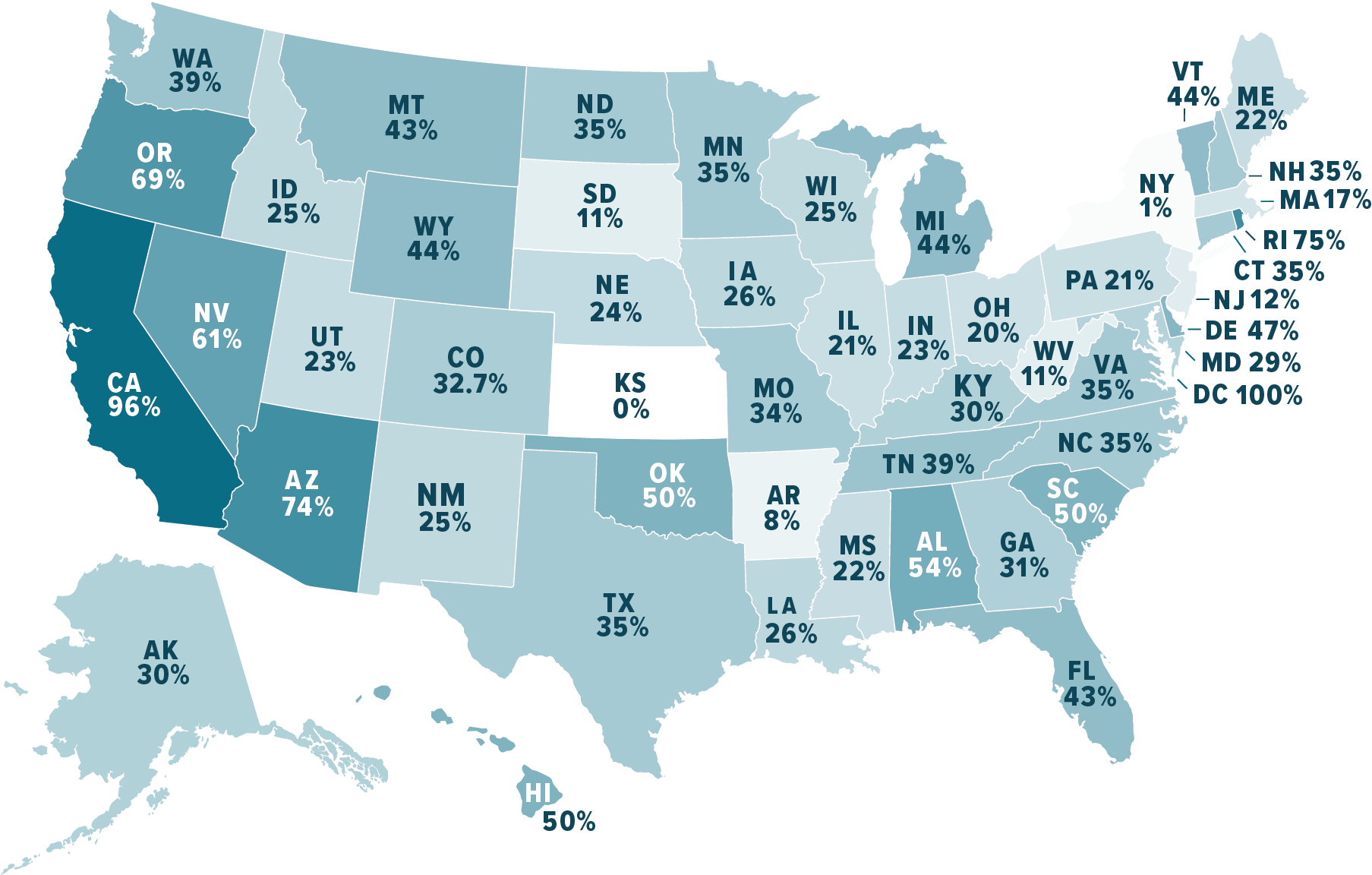
The Federal Bureau of Investigation’s Uniform Crime Reporting (UCR) Program collects and organizes information on crime in the United States. Police departments across the country submit crime data to the UCR Program via the National Incident-Based Reporting System (NIBRS). Data in NIBRS can then be accessed and analyzed to increase our understanding of criminal patterns and inform efforts to address criminal activity.
AWI was instrumental in convincing the FBI, in 2014, to include animal cruelty as a distinct crime within NIBRS. Reporting on animal cruelty crimes began on January 1, 2016. Since then, AWI has actively encouraged analysis of this data to inform policymakers, law enforcement, researchers, and advocates so that more effective interventions can be designed to better protect both animals and the communities in which they live.
To further facilitate and encourage the use of NIBRS animal cruelty data, AWI established the Center for the Study of NIBRS Animal Cruelty Data (the Center), featuring a condensed version of the NIBRS database to provide researchers with readily analyzable animal cruelty data in both SPSS and Excel formats.
The Center’s data are derived from the NIBRS datasets maintained by the Inter-university Consortium for Political and Social Research’s National Archive of Criminal Justice Data (NACJD). The NACJD houses criminal justice data sources, including the NIBRS data. NIBRS animal cruelty data from the years 2016–2023 can be accessed below. Data from 2024 and beyond will be posted as they become available.
Animal Cruelty Reporting By State
In light of the fairly recent addition of animal cruelty crimes to NIBRS and the growing number of law enforcement agencies reporting animal cruelty to NIBRS, caution is recommended in making year-to-year comparisons. An increase in reported animal cruelty incidents from one year to the next may be attributable, at least in part, to changes in reporting rates rather than an increase in animal cruelty crimes.
One way for advocates to evaluate their state’s reporting of animal cruelty crimes is to look at the percentage of the state’s NIBRS-reporting law enforcement agencies that contribute animal cruelty data. Percentages for each state are shown on the map below. These percentages represent the number of law enforcement agencies in each state that reported at least one animal cruelty crime compared to the total number of NIBRS-reporting sheriff’s offices and local law enforcement agencies in that state.1 AWI limited its focus to sheriff’s offices and local law enforcement agencies because these are the entities most likely to receive reports of animal cruelty crime (versus other law enforcement agencies that may also report to NIBRS—for example, transit police). NACJD’s Incident-Level NIBRS Extract Files were used to calculate the number of law enforcement agencies in each state that reported at least one animal cruelty crime to NIBRS.2 While this source identifies what type of law enforcement agency contributed each entry, that information was not factored into these calculations. Rather, the overall count was used, as it was assumed that the number of agencies reporting animal cruelty crimes other than sheriff offices and local law enforcement agencies would be negligible. Information on each state’s total number of sheriff offices and local law enforcement agencies and the percentage of those agencies that report crime data to NIBRS was obtained from the Bureau of Justice Statistics.3

Animal Cruelty Research Funding
To further encourage analysis of this data, AWI is pleased to offer the NIBRS Animal Cruelty Data Research Award. Datasets for analysis can be downloaded below (the raw data can also be obtained from the FBI's Crime Data Explorer or the Inter-university Consortium for Political and Social Research’s National Archive of Criminal Justice Data). If you have any questions about the award program or application process, please email [email protected].
NIBRS Animal Cruelty Data by Year
In addition to the animal cruelty data files, available in SPSS and excel format, each year’s files include the user guide, animal cruelty codebook, and animal cruelty codebook frequencies file. These files can be downloaded individually or as a package.
The Center also established an advisory board of researchers, law enforcement officials, policymakers, and practitioners that will offer recommendations for research directions as well as assist in the dissemination of the Center’s goals and activities.
The Center for the Study of NIBRS Animal Cruelty Data Advisory Board
Bethany Backes, PhD, MSW, MPH
Associate Professor, Violence Against Women Faculty Cluster
Department of Criminal Justice and School of Social Work
University of Central Florida | Orlando, Florida
[email protected]
Maya Gupta, PhD
Senior Director, Research
Strategy and Research
The American Society for the Prevention of Cruelty to Animals | New York, NY
347-978-5361 | [email protected]
Brinda India Jegatheesan, MEd, PhD
Associate Professor, Learning Science and Human Development
Early Childhood and Family Studies | Anthrozoology
University of Washington | Seattle, Washington
[email protected]
Nathan H. Perkins, PhD, MSW
Assistant Professor, School of Social Work
Loyola University Chicago | Chicago, IL
312-915-7035 | [email protected]
Keon C. Turner
Manager, Data Analysis and Reporting Team (DART)
Virginia State Police | Richmond, Virginia
804-674-2143 | [email protected]
Michael Vaughn, PhD
Professor, School of Social Work
Director, PhD in Social Work Program
St. Louis University | St. Louis, Missouri
[email protected]
K. Michelle Welch, Esq
Senior Assistant Attorney General
Office of the Attorney General | Richmond, Virginia
804- 225-4776 | [email protected]
The Center for the Study of NIBRS Animal Cruelty Data Personnel
- Lynn Addington, JD, PhD, American University, AWI Consultant
- Claire Coughlin, MA, AWI Program Coordinator
- Mary Lou Randour, PhD, AWI Consultant
For questions about the Center, contact Dr. Randour at [email protected].
Publications
Publications which have used NIBRS animal cruelty data include:
- Addington, L. & Randour, M.L. (2024). Using National Incident-Based Reporting System Data to Explore Animal Cruelty Incidents that Occur with Intimate Partner and Family Violence: A Brief Report. Journal of Family Violence. doi.org/10.1007/s10896-024-00684-1
- Randour, M.L., Kearley, A., & Wreman, M. (2023). Examining law enforcement agencies’ responses to the addition of Animal cruelty to NIBRS. American Journal of Criminal Justice. doi.org/10.1007/s12103-023-09740-w
- Addington, L.A. & Randour, M.L. (2022). Intentional cruelty versus neglect: New insights on animal cruelty crimes and implications for policy. Criminal Justice Policy Review, 1-23. DOI: 10.1177/08874034221098918
- Palais, J. M. (2021). Using the National Incident Based Reporting System (NIBRS) to study animal cruelty: Preliminary results (2016-2019). Soc. Sci., 10(10), 378. doi.org/10.3390/socsci10100378
- Palais, J.M. (2021) Animal cruelty hurts people too: How animal cruelty crime data can help police make their communities safer for all. Police Chief. policechiefmagazine.org/animal-cruelty-hurts-people-too/
1. The following example illustrates the calculations used by AWI to arrive at the numbers included in the map above: If State X has 40 sheriff offices and local law enforcement agencies and only 70% are NIBRS-reporting, the number of NIBRS-reporting agencies in State X would be 28. If 14 of these NIBRS-reporting agencies have reported at least one animal cruelty crime, State X would be listed as having 50% of its agencies reporting animal cruelty incidents.
2. AWI’s calculations are based on information from the FBI and its NIBRS data, using NACJD’s Incident-Level NIBRS Extract Files. These numbers should not be interpreted as an official statement of participation by the FBI or NACJD.
3. For states with less than full (100%) NIBRS reporting, the number of NIBRS-reporting law enforcement agencies was estimated using the percentage of agencies within a state that were reporting to NIBRS. This source, though, does not identify the type of law enforcement agencies that are or are not reporting to NIBRS.